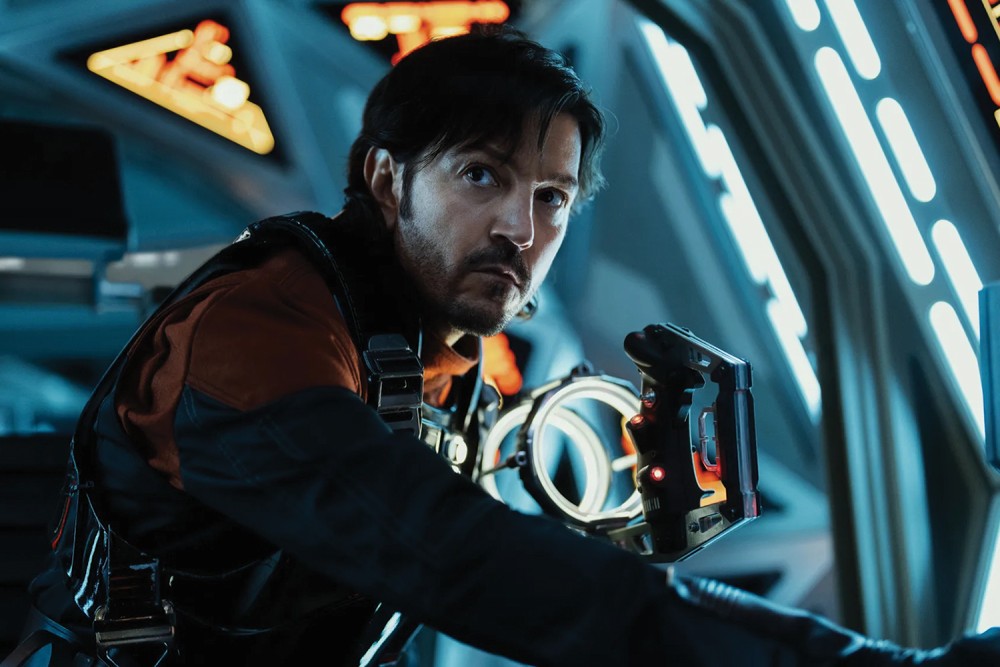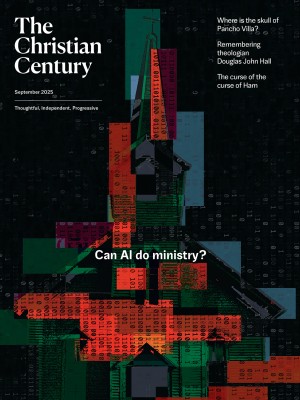The costs of rebellion
Andor demonstrates that Star Wars is still one of our most compelling fictional accounts of imperial power—and the various means of resisting it.

“If I die tonight, was it worth it?” Niya (Rachelle Diedericks), a new recruit to the rebellion, asks Cassian Andor (Diego Luna), as they prepare for a dangerous mission to steal an experimental ship prototype. “This makes it worth it,” Cassian replies. “Being here at the moment you step into the circle. Look at me. You made this decision long ago. The Empire cannot win. . . . You’re coming home to yourself. You’ve become more than your fear.”
This is in the very first scene of the second season of Andor, a spin-off of the sprawling Star Wars universe (streaming on Disney+). Even if you haven’t kept up with the vast mythology that has coalesced around the galaxy far, far away, you may remember the climactic scene in the original Star Wars movie from 1977 when Luke Skywalker destroys the Empire’s planet-imploding weapon, the Death Star, with a precisely targeted shot aimed at its only internal weakness. In 2016, the movie Rogue One (directed by Gareth Edwards) told the story of the team of Rebel agents who acquired the plans that revealed that weakness. That team was led by Cassian Andor, who hinted at his complex history within the Rebellion. Andor gives us his backstory, and the history of the Rebellion itself, in two fantastic, tightly constructed seasons.
Read our latest issue or browse back issues.
If a prequel to a prequel sounds like falling into a rabbit hole of Star Wars nerdery, never fear: Andor is one of the most complex, carefully crafted television series I’ve watched in many years, and other than the settings and costumes, you might forget the larger mythological context. In my review of J. J. Abrams’s The Rise of Skywalker (“In Star Wars, how universal is the Force?” Jan. 29, 2020), I lamented the way this ninth Star Wars film doubles down on dynastic power and reduces the entire mythology to Emperor Palpatine’s personal immortality quest. In The Last Jedi and several spinoff series, like the excellent animated series Rebels, we were offered the promise of a new side to the mythology, one less about “the hero’s journey” or an eternal battle between Jedi and Sith Lords and more about the cruel, unrelenting machinery of Empire and the ordinary people who resist it.
Andor is the very best of this line of storytelling, proving that Star Wars is still one of our most comprehensive and compelling fictional accounts of imperial power—and the various means of resisting and overthrowing it. Like all good mythologies, it is both a fully realized fictional world worth inhabiting for its own sake and a mirror by which we can examine our own reality.
Parallels with current attacks on democracy are inspiring many viewers to see Andor as a rallying cry for new resistance movements. The scene between Niya and Andor shows up regularly in internet memes, urging us to see ourselves in Niya “coming home to ourselves” and “becoming more than our fear.” In the first season, a young Rebel and homegrown political philosopher, Karis Nemik (Alex Lawther), records a treatise that becomes a manifesto for the series and for viewers who seek inspiration from the show. When President Trump mobilized the National Guard and Marines against protestors in L.A., quotes from Nemik’s treatise began to crowd my social media pages: “Remember this. The imperial need for control is so desperate because it is so unnatural. Tyranny requires constant effort. It breaks. It leaks. Authority is brittle. Oppression is the mask of fear.”
The implications of these parallels are clear: we too must join a rebellion of sorts, become more than our fear, defend our democracy before the slide to tyranny is complete. But these two examples aside, inspiring speeches are a rarity in Andor and the least of what it has to offer us as a meditation on the perils of freedom. It is a long road from Nemik philosophizing in the woods to Luke’s daring mission on behalf of a well-coordinated Rebel Army, one scattered with uncoordinated anarchist groups, upper-class funders, duplicitous politicians, and ordinary citizens crushed under the heel of the Empire. Often these groups do not communicate with each other and, when they do, often they do not trust each other. To become something capable of taking on the machinery of the Empire, the Rebellion must transform itself into a machine of its own, and this involves compromise and violence on a devastating scale.
Halfway through season 2, another group of disorganized homegrown Rebels wants to engage in direct, violent action to protect their planet from imperial overreach. Two experienced Rebel officers are sent to oversee the action, and their message is clear: “Prep is useless if you can’t follow orders.” When Cassian is reprimanded for taking matters into his own hands, he retorts, “The day I need permission to come and go, I’m gone.” “That day is near,” his commanding officer replies. By the end of the season, Cassian’s movements are dictated entirely by “the real army” the ragtag Rebellion has become.
This, it seems, is the real lesson of Andor: What does freedom cost, and what do we lose on the path to winning it? Rebel and imperial soldiers alike are expected to sacrifice their personal relationships, freedom of movement, and moral qualms. “Some of us, most of us,” Cassian says in Rogue One, “have done terrible things on behalf of the Rebellion.” Andor shows us the cost of these compromises, both morally and existentially. If there is real freedom on the other side of Rebellion, these Rebels won’t live to see it.
The parallel with our own moment more likely comes a few decades earlier in the Star Wars mythology, when Chancellor Palpatine evokes imperial power in the face of a never-ending war that he has himself manufactured to justify his unchecked power. Senators and citizens alike acquiesce to this power in the name of security and order. If Andor can teach us anything, it is that freedom must be defended before it is lost. Once tyranny takes root, the cost of overthrowing it is almost too great to bear.






